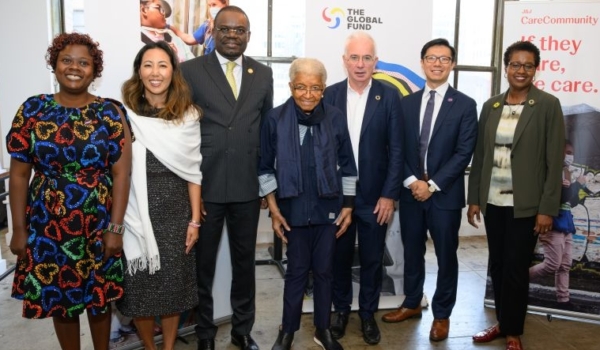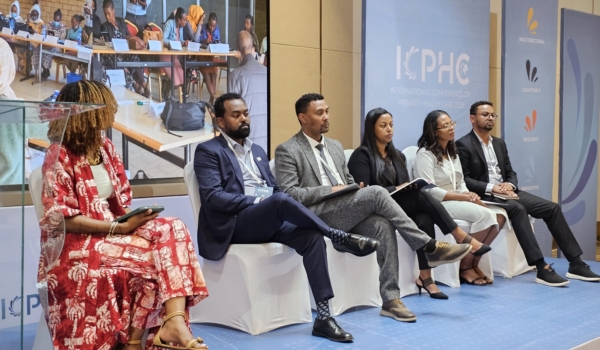Over the past three years, Last Mile Health has partnered with research institutions in Bangladesh, Brazil, Ethiopia, and Liberia to identify trends on establishing and sustaining high-performing national community health worker programs. Together, these countries offer valuable lessons that are documented in the newly-launched Exemplars in Global Health.
The following blog is part two of a four-part series highlighting the Exemplars in Global Health Initiative. The case study can be found here and was written in collaboration with the National School of Public Health – Oswaldo Cruz Foundation.
In 1990, Brazil’s under-five and maternal mortality rates were high, while immunization coverage was very low. This was especially pronounced in the more marginalized populations and poorer regions where Brazil’s community health worker program began. But this has been shifting.
By 2015, the country’s under-five mortality had been reduced by 75 percent. Maternal mortality fell by almost 60 percent, and the country had reached nearly universal immunization. During this period, the difference between the under-five mortality in the poorest regions versus the wealthiest regions narrowed considerably.
The number of people seeking care – and getting care – has since increased, as have school enrollment and breastfeeding rates. Additionally, the rates of fertility and the rates of avoidable hospitalizations for certain chronic diseases have declined sharply. Furthermore, these gains have been broadly shared – generally lower income black and mixed-race (pardo) populations have seen a two fold decrease in preventable deaths as compared with generally wealthier white populations.
So how did Brazil bridge these imbalances to reduce gaps between rich and poor, and deliver more equitable healthcare solutions for all?
The answer has been dissected in the Exemplars in Global Health platform, where Brazil’s community health worker program is identified as a positive outlier in global health. Brazil’s program is one of the largest community health worker programs the world has seen, with nearly 240,000 workers who have made healthcare available and accessible to more than half of Brazil’s population.
Among the Exemplars in Global Health team’s key findings was that Brazil’s community health worker program follows a holistic approach, addressing health challenges that stem from hygiene and sanitation to education, connecting the poor to social service programs, and improving access to primary care. Structurally, it is highly integrated, with each community health worker serving as a link between communities and nurses, nurse assistants, and physicians. Called a “Family Health Team,” it is driven largely by the community health worker, who is the first point of contact for communities. Their work helps drive demand for primary healthcare, while ensuring follow-up and any necessary referral to higher care are delivered in a consistent manner.
Community health workers in Brazil are integral members of the formal primary healthcare team. They bridge the gap between communities and the health clinic while also providing preventative care to families, helping to reduce the burden on the health system down the line. Additionally, through the on-the-ground care they provide, they become better equipped to serve their Family Health Teams, providing data and inputs, and adding value to the delivery of overall health services on a larger scale.
When it was first implemented, Brazil’s robust community health worker program strategy required a funding mechanism that would allow for its sustainability. The country enacted laws that mandated states spend between 12 and 15 percent of their budgets on health, much of it earmarked for community health worker efforts. Then, it offered municipalities financial incentives for the adoption of the program. And finally, it instituted pay-for-performance funding for said municipalities, giving additional funding to any municipality that met improvement targets.
The result has been notable. Ultimately, 160 million people in Brazil today have access to the country’s healthcare system. And while the program needs to grow to reach the population in its entirety — with a focus on addressing a high degree of variability in program quality, including the availability of basic equipment and adherence to guidelines, protocols, and training requirements — it is clear that community health workers continue to play an essential role in closing gaps to ensure poor Brazilians secure the same future as citizens of more means.
About Exemplars in Global Health
Exemplars in Global Health is a program led by Gates Ventures and fueled by the research and insights of both in-country and global experts and partners, to identify the biggest global health success stories of our time. Exemplars in Global Health seeks to identify what public health interventions have delivered impact, how programs have been designed to circumvent challenges, and why specific interventions have led countries to become positive outliers of success. The program’s aim is to allow decision makers to explore proven strategies, policies and actionable recommendations that create similar pathways to scale their own success, in a faster, more effective manner.
To learn more about Brazil’s remarkable transformation, read the case study here*.
*Note: This research was conducted in 2017 and 2018 by Last Mile Health, in collaboration with Fiocruz, and focused on how the system was established and functioning at that time. Since then, especially with the creation of the Primary Health Care Secretariat, the primary health care system, financing and policies related to community health have been under revision. Some information in this case study, therefore, may not exactly reflect the most recent (present) situation, due to an ongoing process of revisions. Nevertheless, the experiences of Brazil present valuable learnings for the rest of the world.





